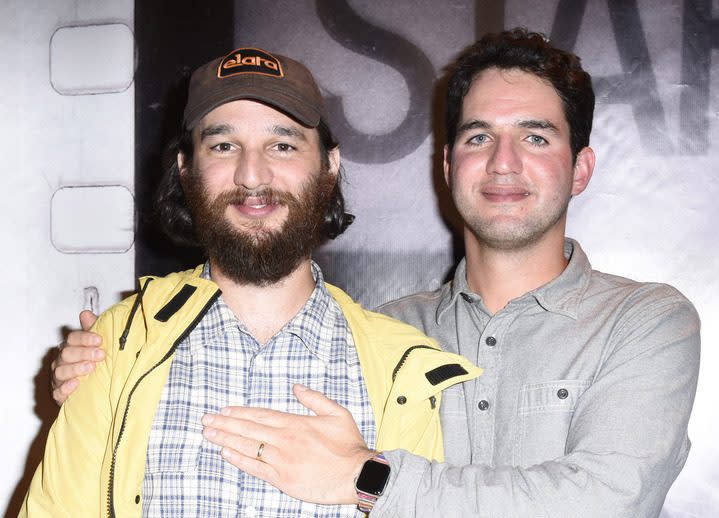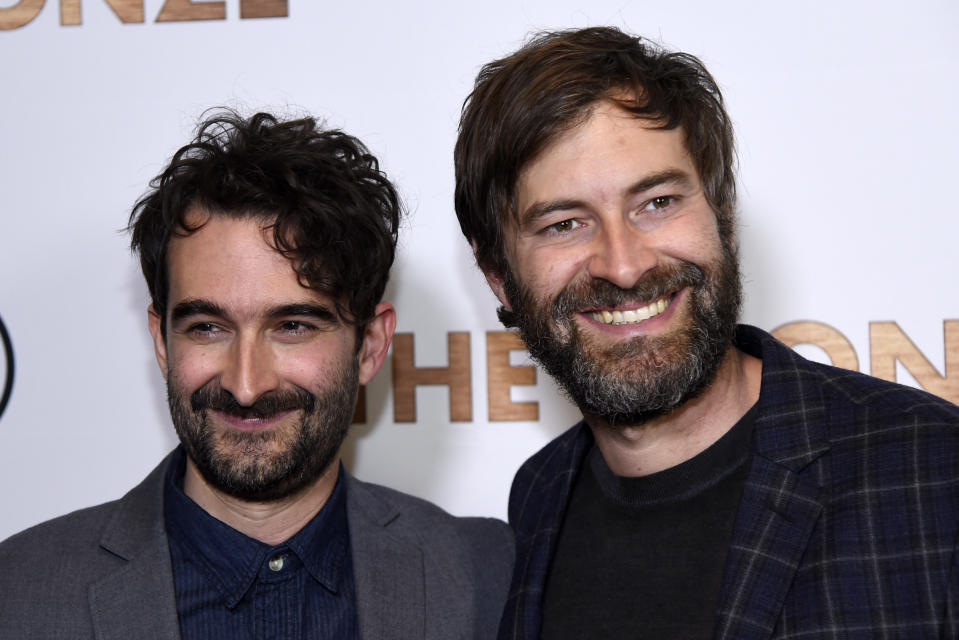The Safdies Are Splitting Up on Their Next Projects. An Old DGA Bylaw Could Complicate a Reunion

- Oops!Something went wrong.Please try again later.
- Oops!Something went wrong.Please try again later.
The film world is mourning the dissolution of one of indie cinema’s most fascinating auteurist pairs, Benny and Josh Safdie, colloquially known as the Safdie Brothers (“Uncut Gems”). It may be more of a break than a break up, but for the time being, the “Good Time” guys are going solo.
“It’s a natural progression of what we each want to explore,” Benny Safdie recently told Variety of the split from his brother, dispelling rumors that the breakup was anything but brotherly. “I will direct on my own, and I will explore things that I want to explore. I want that freedom right now in my life.”
More from IndieWire
2024 DGA Awards TV Nominations Have Fascinating Overlap with Current Emmys Contenders
Dwayne Johnson Says Benny Safdie 'Thought I Ghosted Him' Before Making 'The Smashing Machine'
He’s left the door open for a reunion; perhaps it will come on the Safdies’ (the duo) previously announced project with Adam Sandler and Megan Thee Stallion. It’s not dead, Benny said, just “on pause.”
Due to a DGA bylaw, a reunion could get complicated. The Directors Guild of America does not control who works together, but they do control the credits.
The DGA bylaw is Article 7-208, known as the “One Director to a Film” provision. And it’s not new. The 1978 rule requires all DGA projects name a single director. It is designed to prevent 1) a producer or studio from delegating tasks to cast and crew (as a director would), or 2) a studio hiring a co-director who’s there to just “manage” the real director. Creatively, it ensures there is one singular vision behind a film — not one person handling the actors and another the post-production. The DGA doesn’t want a situation where arbitration is required to determine numerous credits on a single project. Ask the WGA how that can go.
“In that situation, the spirit of making a film is bifurcated,” Gil Cates, the DGA’s secretary-treasurer said in the guild’s own magazine in 2004. “What it says is, ‘OK, there’s going to be one voice speaking for the actor, and another voice speaking for the camera.’ The best interpretation of music is made by a single conductor. The best painting is made by a single painter. And I think the best film is made by a single artist. There are exceptions to that, but they are rare. Occasionally you find two people who work together in a way that makes it almost impossible for them to work separately. But the business of dividing up the director’s labor so that one talks to the actor, one talks to the cameraman is terrible.”
It can be done — but there’s paperwork. A team or duo must apply for a waiver and prove they are a “bona fide team,” in the guild’s words from that 2004 article. The lengthy application process is with the Western Directors Council and includes a DGA rep set visit for observation. If that’s not enough of a hoop to jump through, the filmmaking duo or team then must present their case to a panel of fellow directors. The panel is looking for prior collaborations and the demonstration of a shared, singular vision.
The director guild prefers teams work together for the long haul and not as a one-off. If an established partnership ends for solo work, former partners must begin the process all over again. For many teams, even those as big as the Coen Brothers, the Duplass Brothers, or the Hughes Brothers, a breakup can easily become permanent.

IndieWire reported on the complexities and nuances of the bylaw in 2022, just as Daniel Scheinert and Daniel Kwan, aka Daniels, were releasing their eventual Best Picture winner “Everything Everywhere All at Once.” After the Daniels directed their debut film “Swiss Army Man,” Scheinert directed “The Death of Dick Long” on his own. That got the guys “in big trouble,” he told Indiewire, “and we promised to never do it again.”
Scheinert and Kwan had to reapply for a DGA partnership. They were convinced one was going to be stuck with the short straw — a producer for life. The shared credential, and the Oscar, went to the Daniels.
“I thought I’d ruined it,” Scheinert said. “I knew about the rule, but I don’t like authority, so when they called me and said, ‘Just so you know, you’re going to get your waiver revoked,’ I was like, ‘No, I’m going to make the movie that just got greenlit.’”
Article 7-208 is a controversial rule among some guild members — it’s also why some indie filmmakers avoid a DGA membership entirely. The Coens didn’t officially become a unit until they released “The Ladykillers” in 2004. And as IndieWire previously reported, the one-director-to-a-film provision has (unofficially) resulted in two directors sharing the salary of one.
When reached, the DGA had no comment for this piece.
Should the Safdies wish to make another DGA project as a pair, they will have to follow procedure, an individual familiar with the process told IndieWire. The toughest part may be proving a commitment to stay together — guys, you just broke up. Benny’s bigger payday as a solo artist (and yes, the creative freedom) could cushion that blow a bit.
Best of IndieWire
The Best LGBTQ Movies and TV Shows Streaming on Netflix Right Now
Guillermo del Toro's Favorite Movies: 54 Films the Director Wants You to See
Nicolas Winding Refn's Favorite Films: 37 Movies the Director Wants You to See
Sign up for Indiewire's Newsletter. For the latest news, follow us on Facebook, Twitter, and Instagram.

